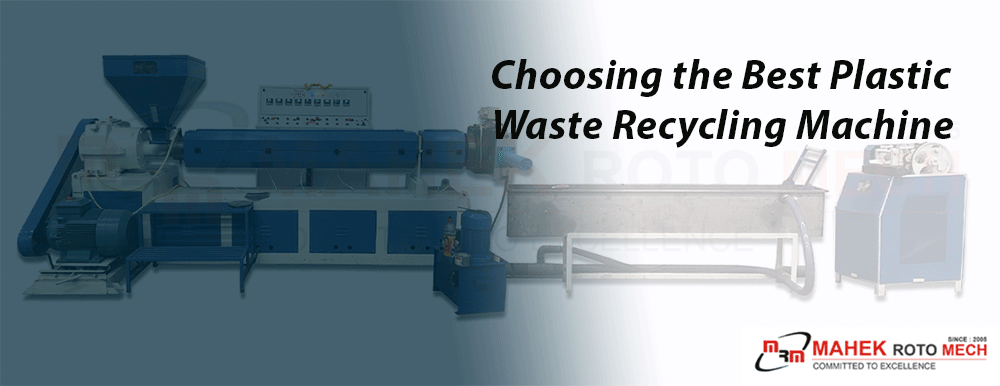
Choosing the Best Plastic Waste Recycling Machine for Your Business Needs Projects
Plastic waste recycling provides a great commercial opportunity in a society where sustainability is becoming more and more crucial. Companies are starting up to lower their environmental effect and tap into a rising market given the growing worldwide plastic trash. One important choice can either make or break your business if you want to launch or grow your recycling company: picking the suitable plastic trash recycling equipment.
Why Machine Selection Matters
Businesses differ greatly in their budgets, waste sources, plastic types, and processing volumes. An appropriate recycling machine boosts operational efficiency, product quality, and return on investment. Choosing the wrong kind, on the other hand, results in Underperformance, downtime, and excessive maintenance costs.

Types of Plastic Waste Recycling Machines
Understanding machine categories is the first step in selecting the right equipment. Here are the most common types of plastic recycling machines:
1. Shredders
Shredders break down bulky plastic waste into manageable fragments. They use powerful rotating blades or shafts to slice through hard, flaky, or fibrous materials. Shredders are vital for initial waste reduction and can handle post-consumer plastics, industrial scraps, films, bottles, and more.
Pros:
- Works with various waste forms and sizes.
- Reduces storage and handling challenges.
- Prepares feedstock for further processing.
Cons:
- Shredded material often requires washing and drying before reuse.
2. Granulators
Granulators further reduce shredded waste into fine pellets or granules, ideal for extrusion or molding. They are especially useful for producing high-quality recycled resin for manufacturing new plastic products.
Pros:
- Produces uniform granules for downstream processing.
- Helps recover more material, reducing landfill burden.
Cons:
- Requires pre-shredded feedstock for optimum performance.
3. Extruders
Extruders melt plastic flakes or pellets and transform them into new product forms like filaments, pipes, or sheets. These machines are essential for reprocessing plastic into value-added items or raw material for manufacturing.
Pros:
- Versatile; produce multiple product types.
- Suitable for manufacturing-centric recycling operations.
Cons:
- Requires clean, well-prepared input material.
4. Washing and Drying Lines
Plastic washing and drying lines remove contamination, moisture, and impurities from waste materials prior to extrusion or pelletizing. These integrated systems greatly enhance end product quality.
Pros:
- Ensures cleanliness, reducing downstream defects.
- Essential for post-consumer plastics.
Cons:
- Space and water requirements.
Waste Source and Characteristics
Industrial Waste: Often clean and dry, sourced from factories and manufacturing plants. May not require intensive washing, favoring shredders and extruders.
Post-Consumer Waste: Typically wet, mixed, or contaminated; demands washing and drying lines, robust shredders, and pelletizers with degassing capabilities.
- Rotomoulding Machine
- Moulds For Rotomoulding
- Roll Rotomoulding
- Open Flame Rock Rotomoulding
- Pulverizer For Rotomoulding
- Plastic Granules Making Machine

